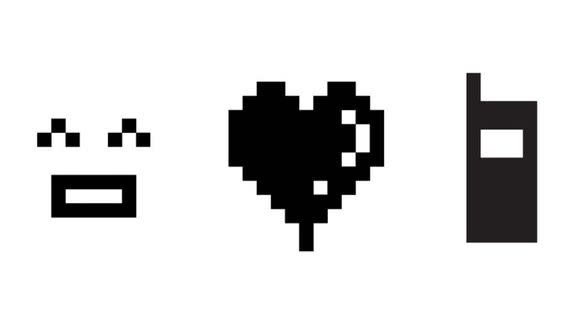MoMA acquires latest masterpieces: The world's first emoji

The beloved emoji that we take for granted and use every day to transmit our deepest emotions have a history, and now that history will be protected as part of the Museum of Modern Art's (MoMA) permanent collection.
SEE ALSO: Interracial couples emoji app and hashtag launches to promote the film 'Loving'
No, the museum isn't appropriating the emoji we regularly use on our smartphones; instead, it's acquiring the original collection of emoji distributed by Japanese telecom giant NTT Docomo back in 1999.
Developed by Shigetaka Kurita, the emoji went live on Japanese mobile phones back when leading-edge mobile innovation was represented by platforms like Docomo's i-Mode and the flip phone was at the height of its popularity.

Image: Moma
"All 176 Docomo emoji will be shown both as a group and individually, as well as many from the current Unicode set," Paul Galloway, a MoMA Collection Specialist, told Mashable. "There will be printed images, animations on monitors, and [possibly] a wallpaper."
Of course, because emoji are symbols and not one-time art, some might wonder what, exactly, MoMA means when it says it has "acquired" the symbols. Back in 2010, the museum acquired the "@" symbol, lauding its status as an impactful design element in modern design. At the time, the museum recognized Ray Tomlinson as having appropriated and changed the meaning and import of the symbol, which had been in use in various forms for hundreds of years.
"We have acquired the design act in itself and as we will feature it in different typefaces, we will note each time the specific typeface as if we were indicating the materials that a physical object is made of," MoMA curator Paola Antonelli wrote at the time.
However, in the case of Docomo's emoji, originally born in the age mobile technology, the lineage of the design is a lot clearer.
"We have express permission as part of the gift to display their 1999 emoji at the Museum in perpetuity," says Galloway. "NTT Docomo was extraordinarily generous in allowing this."
As a piece of modern art, the display will be up to individuals to determine where it stands alongside more traditional works from dedicated artists and designers from the past. But as a touchstone tracking the rapid evolution of how we communicate in the 21st century, this is possibly one of the most powerful acquisitions the museum has ever made.
The exact details of the installation are still being planned, but the public will get its first look at the presentation, which will include 2D graphics and animations, beginning in December.

 Yahoo News
Yahoo News 